Turbulent politics aside, tiger economies such as Thailand and Indonesia are seeing further auto growth
The tigerish automotive markets of South-East Asia have not been quite so rampant in 2014 as the turbulent politics of its two leading vehicle-producing countries, Thailand and Indonesia, put a downer on the industry. Thailand’s politics are nearly always in turmoil, but this year a military coup deposed the democratically elected government; the fallout has badly knocked local car sales, with the local Federation of Thai Industries (FTI) predicting sales of 900,000 in 2014, down from 1.33m the year before.
The good news for vehicle-makers is that Thailand is relatively well protected from local shocks thanks to a healthy export market. The FTI predicts that the country will make 2.1m vehicles in 2014, down from 2.5m the previous year, meaning that the fall is almost all down to the local slump. Jessada Thongpak, a local analyst for IHS Automotive, says that much of the drop in demand can be attributed to the end of incentives aimed at boosting sales of small cars, and reckons the market will rebound quite quickly. “Local consumers have the purchasing power, but they want to wait and see that the political climate will recover,” he states. That should come once the military government names a date for the promised election. “We hope the middle of next year, or 2016,” says Thongpak. “I’m sure by that time the market will recover.”
Locally built pick-ups from the likes of Toyota, Isuzu, Mitsubishi and Ford continue to do well both in Thailand and for export markets, but superminis built under the county’s Eco Car initiative are gaining ground. Started in 2007 as a tax-friendly scheme to persuade global makers to build low-emission small cars in the country, Eco Car has now moved to phase two in order to counter a similar scheme set up by Thailand’s regional carmaking rival, Indonesia.
In October, the local Board of Investment (BoI) announced that it had approved investment applications from five manufacturers building cars in the country – Ford, GM, Nissan, Mitsubishi and Toyota – to expand production under the Eco Car 2 alongside Mazda, which had already signed up. In return for tax breaks, those makers must now produce cars emitting less than 100 grams of carbon dioxide per kilometer, compared with 120g/km under the old scheme, and cars must be rated at least Euro 5 for emissions, versus Euro 4 previously. This gives Thailand the edge over Indonesia, according to Thongpak. “Indonesia’s low-cost green car scheme is only Euro 4 and fuel consumption is not as competitive, meaning they don’t have the same export potential. In Thailand, they can export anywhere in the world,” he explains.

Mazda has already started production of its critically acclaimed Mazda2 supermini, the first car to be produced under phase two (and also the first diesel model). Thailand has thus become one of three production locations for the new model, along with Japan and Mexico. Mazda’s Rayong plant in Thailand’s south-eastern automotive hub will build cars for Australia as well as ASEAN markets.
Eco competition from Indonesia
Indonesia has launched a similar scheme to Thailand in an attempt to anchor more carmakers in the country: Low Cost Green Car. One of the first models under this programme was launched in May this year by Nissan’s low-cost brand, Datsun. As befits Indonesia’s thirst for budget people-carriers, the car was the supermini-based 1.2-litre seven-seat Go Panca, manufactured at the OEM’s new plant in Purwakarta, West Java.
The green-car scheme looked to be under threat when in July one of its main opponents, Joko Widodo, the former governor of Jakarta, was elected president of the country. While governor of the traffic-choked capital city, he questioned the need for a scheme that promoted cars; but that opposition seems to have vanished. “The automotive industry makes an important contribution to foreign direct investment in the country; it’s not possible that he will cancel this project,” says Thongpak. Indeed, the new president might boost sales of more economical cars with a rumoured plan to bring forward the promised cut in road fuel subsidies and use the money to improve infrastructure.
"Not in the short term but in the longer term, Vietnam could be the next China with lower production costs" – Jessada Thongpak, IHS Automotive
Indonesians are certainly buying more eco cars. The percentage of sales in the category with engines of 1.2 litres or below was just 4% in 2013. To the end of October 2014, with five eco cars now in the market, that figure was up to 14%, according to figures from the Association of Indonesian Automotive Manufacturers (Gaikindo). In the same period, 155,368 eco cars were built – three times more than the total for 2013. So far in 2014, vehicle sales are only 1.6% up on the figure for this time last year at 1.1m, but vehicle production is set to beat the 2013 total of 1.2m.
The figures reveal that Indonesian makers are still largely focused on the home market with its huge population of 247m and low car ownership of 80 per 1000 people, according to a recent estimate by analysts Frost and Sullivan.
Modest Malaysian growth
By contrast, car ownership for neighbouring Malaysia is around 300 per 1000 – one reason why IHS is pessimistic about that country’s ambitious goals to establish its own eco-car manufacturing scheme. So far, three OEMs – local maker Perodua, Mazda and Chinese SUV specialist Great Wall – have signed up to the energy efficient vehicle (EEV) scheme there, reports local automotive journalist Paul Tan. “I don’t think it will succeed. It’s not cheap to make there,” adds Thongpak. IHS predicts that Malaysian vehicle production will rise only modestly to 700,000 units by 2018, up from just over 600,000 in 2013. By comparison, it expects Thailand to expand production to 3m by 2018, and Indonesia to almost 2m by the same date.
Indonesia does export models – by the end of October 2014, the country had closed in on the 2013 export total of 171,000 built-up cars. Most are exported by Toyota. In February, the OEM started shipping the Ayga supermini which is built by its subsidiary, Daihatsu, to the Philippines. It was the first model to be exported under Low Cost Green Car. Toyota also sends the Vios saloon to the Middle East and other markets from its factory in the Jakartan suburb of Karawang. However, the overall export figure is a long way off that of Thailand, and likely to stay that way while car ownership is still so low in the country. The shift to cars will be helped by the green car programme, but right now the ubiquitous motorcycle remains Indonesia’s favourite mode of transport.
Recently, motorcycle sales have been comparatively weak in the world’s third-largest powered two-wheeler market (behind China and India), from 8m in 2011 to 7.7m in 2013 and only up 3.5% in the first ten months of 2014. The situation may not seem desperate, but Indonesia has been experiencing colossal growth since 2000, when annual motorcycle sales were below 900,000 units. The market is dominated by Honda, which took two-thirds of sales in the first ten months of the year, according to the Indonesian Motorcycle Industry Association (AISI).
Yamaha takes most of the rest, building machines at four factories. With the domestic market taking off as it has, local production is aimed at satisfying internal needs and there are few imports or exports. In 2013, just 27,000 motorcycles made it out of the country, from a total production of 7.7m units. As in India, though, local quality has been improving to the point that makers are looking to export. Yamaha announced back in July that it was planning to ship its R25 250cc sportsbike made at Pulogadung, East Jakarta, to 14 countries including Europe and Japan.
Stalling production in Vietnam
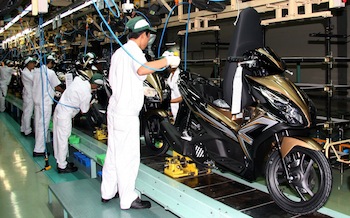
Thongpak at IHS suggests that Vietnam’s nascent car industry could grow if the government removes tax barriers and improves the infrastructure. “Not in the short term but in the longer term, it could be the next China with lower production costs,” he says, adding that current annual production is around 100,000 units, with sales of around 200,000. Thongpak points out that car ownership in the country is one of the lowest in South-East Asia at around 50 per 1000 people; Vietnam has a population of 90m. Ford is one global manufacturer in the country, building cars such as the Focus, Fiesta and Ranger pick-up from kits in a local joint venture.
IHS has identified the Philippines as another country in the region with the potential to expand car production. Currently, the numbers are similar to those for Vietnam, with 100,000 units produced and around 200,000 sold.
Premium bike-making on the rise
The South-East Asian country that has established itself as the key hub for motorcycle exports is Thailand, which has a lengthy track record of production; Honda started making motorcycles there in 1967. The country is now attracting premium bike-makers. British firm Triumph makes its retro-styled Bonneville range and also its Tiger adventure motorcycles for global export at its plant in Chonburi, south-east of Bangkok. Italian sportsbike specialist Ducati is also setting up a plant in the country, its first outside Italy.
In Thailand, Honda has a production capacity of 1.7m units per annum, after expanding from the 110-150cc scooters and ‘underbone’ (aka step-through) bikes so popular in this part of the world to larger models built for global export, which are made on a separate production line launched in 2012. This year it added the CBR650, with exports heading to countries in Europe and North America among other regions. Suzuki is another maker using Thailand as an export base for two-wheelers, shipping its Burgman 125 and 200 premium scooters to Europe, North America and other Asian markets.
BMW also has an operation making motorcycles from kits at its Rayong plant, alongside kit assembly of some of its cars. The premium maker plans to expand its car operations to 10,000 units a year, including the Mini Countryman. BMW announced in November that it had struck a deal with local CKD engine assembler Powertech to build four-cylinder diesel engines, beginning in December 2015. Powertech also assembles engines for Mercedes, which has a CKD assembly operation in the country. “The reason for having our own CKD production is the customs duties,” a spokesman for BMW told AMS.
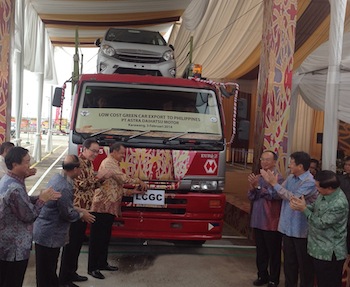 Toyota is the biggest automotive exporter from Indonesia, a country which in 2013 exported 171,000 built-up cars
Toyota is the biggest automotive exporter from Indonesia, a country which in 2013 exported 171,000 built-up carsIn fact, the export of cars with European badges will begin next year when Mitsubishi starts shipping Fiat-badged versions of its Triton (L200) pick-up which is built in Thailand under an agreement between the two companies.
The growth and maturation of Thailand’s car industry means that it is moving into R&D, even quite high-tech research. For example, BMW announced in November that it was collaborating with a local university and a tech firm to research DC quick chargers for electric vehicles. National politics might be volcanic, but the vehicle industry is calmly expanding thanks in part to strong exports. And that success is inspiring envious neighbours to follow suit.



































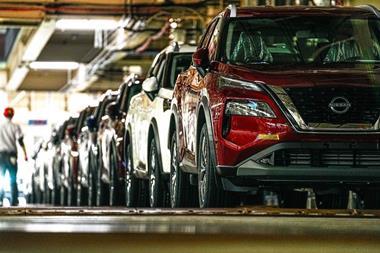
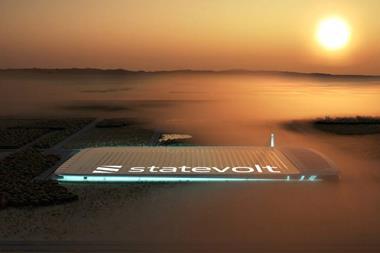

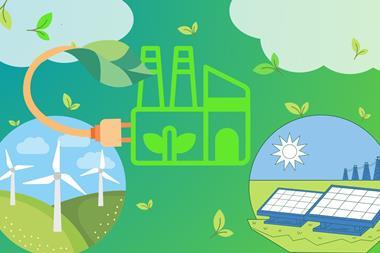
No comments yet